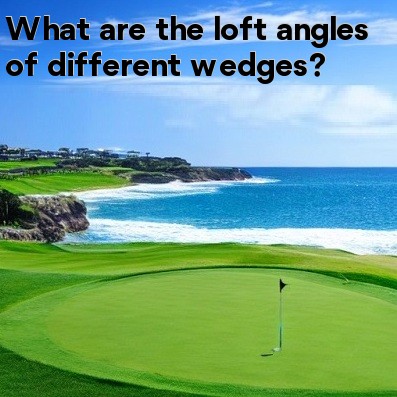
In golf, What are the loft angles of different wedges?
When it comes to wedges in golf, the loft angle refers to the angle between the face of the club and the vertical plane. Different wedges have different loft angles, allowing golfers to hit shots with varying trajectories and distances. Let's take a look at the loft angles of different wedges:
- Pitching Wedge (PW): The pitching wedge is usually the highest lofted club within a standard set of irons. It typically has a loft angle between 44 and 48 degrees, making it ideal for shots around 100 to 125 yards.
- Gap Wedge (GW): The gap wedge, also known as an approach wedge, fills the gap between the pitching wedge and the sand wedge. It has a loft angle between 50 and 54 degrees, allowing for shots around 80 to 100 yards.
- Sand Wedge (SW): The sand wedge is designed specifically for shots out of bunkers, but it is also useful for shots around the green. It typically has a loft angle between 54 and 58 degrees, helping to get the ball out of the sand and onto the green.
- Lob Wedge (LW): The lob wedge is the highest lofted club in a golfer's bag. It has a loft angle between 60 and 64 degrees, making it perfect for shots that require a high trajectory and a short distance, such as hitting over hazards or stopping the ball quickly on the green.
Understanding the loft angles of different wedges is crucial in golf as it allows golfers to choose the right club for various shots. By selecting the appropriate wedge based on the distance, trajectory, and obstacle, golfers can increase their accuracy and improve their scoring.
It's important to note that these loft angles can vary slightly depending on the manufacturer and the specific design of the club. Additionally, some golfers may choose to carry additional wedges in their bag to cater to different shot demands and personal preferences.
When using wedges, golfers should also consider factors such as the lie of the ball, the type of shot they want to play, and the conditions of the course. A higher loft angle will generally produce a higher trajectory and a softer landing, while a lower loft angle will generate a lower trajectory and a longer roll.
Lastly, it's vital for golfers to practice with each wedge and become familiar with their distances and shot-making capabilities. This will help golfers make more informed decisions on the course and execute the shots they desire.
So next time you're planning your approach shots or shots around the green, remember to consider the loft angles of your wedges!





